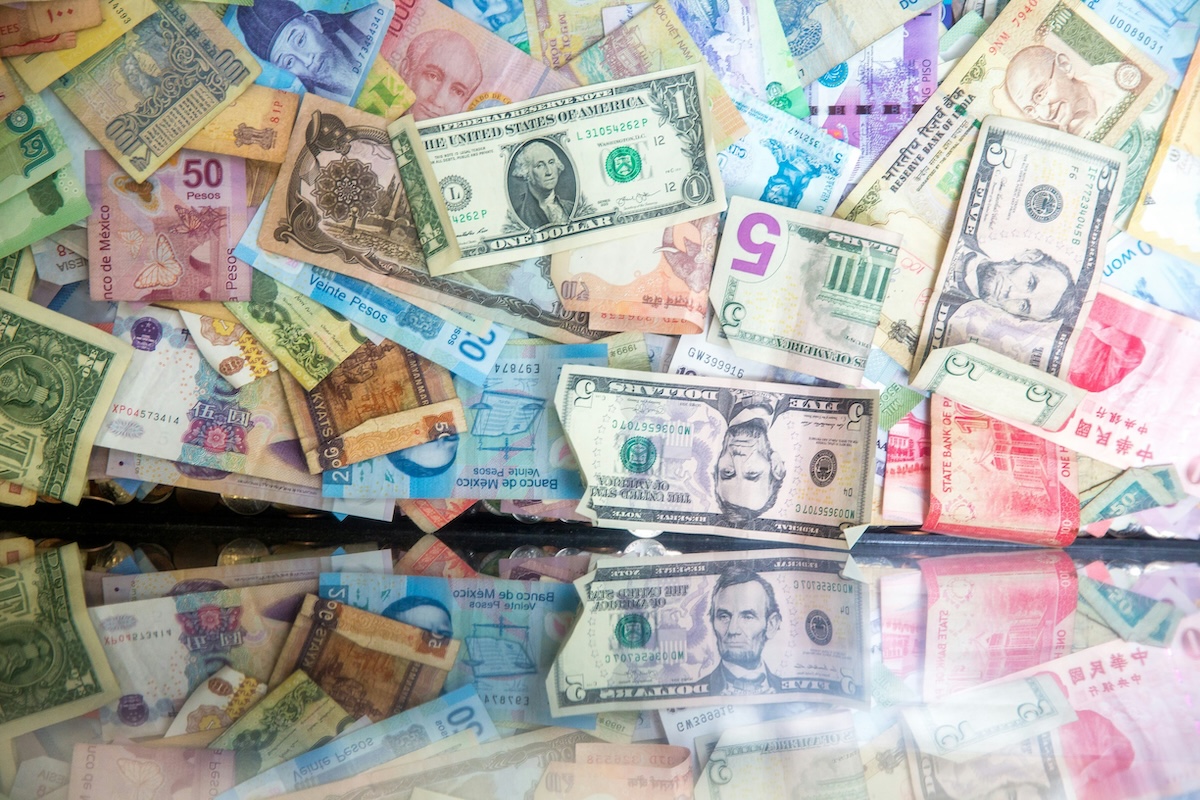
How International Currency Codes Get Created, Changed, and Sometimes Disappear
By: Sarah Stone
Skip to Section
- Article Summary
- The ISO Standard Behind Your Wallet
- The Code Formula
- When Money Gets a New Name: Currency Code Changes
- The Ripple Effects of Code Changes
- Fascinating Currency Code Trivia
- Currencies Without Countries and Countries Without Currencies
- What Happens During Currency Transitions
- Why Travelers Should Care About Currency Codes
Article Summary
Those boring three-letter currency codes on your banking app? They’re actually a secret language that keeps global finance from turning into total chaos.
You’ll learn how ISO 4217 creates order from monetary madness, why countries change their currency codes (spoiler: politics and hyperinflation are usually involved), and what happens when entire nations basically rage-quit their own money. Plus, you’ll find out why some currencies don’t belong to any country and why China has two different codes for the same yuan.
- Currency codes follow a simple formula: country code + currency name (USD = US + Dollar), except when they don’t
- The Caribbean just switched from ANG to XCG after their political entity dissolved 15 years ago – talk about bureaucratic speed!
- Zimbabwe’s currency saga reads like a financial horror story, going through ZWD, ZWN, ZWR, and ZWL after hyperinflation
- The “X” prefix means non-country currencies like XAU for gold or XBT for Bitcoin (yes, Bitcoin has a code now)
- El Salvador still has a currency code (SVC) even though they ditched their colon for US dollars in 2001
You might not think twice when you see USD, EUR, or JPY on your banking app, but these three-letter codes represent one of the most critical standardization systems in global finance. Currency codes silently power billions of financial transactions daily, allowing money to flow across borders with minimal confusion.
But who decides these codes?
What happens when a country changes its currency?
And why should travelers care?
The ISO Standard Behind Your Wallet
Those three-letter currency codes follow a strict international standard called ISO 4217, maintained by the International Organization for Standardization. This Swiss-based organization creates standards for everything from paper sizes to quality management, and its currency code system helps financial institutions speak the same language worldwide.
The current system dates back to 1978, when ISO recognized that banks and businesses needed a universal way to reference currencies without language barriers or confusion. Before standardization, banks used all sorts of abbreviations, creating a recipe for costly mistakes.
The Code Formula
ISO currency codes follow a surprisingly straightforward pattern:
The first two letters typically represent the country code based on another standard (ISO 3166), while the third letter usually stands for the currency’s name.
For example:
- USD: US (United States) + D (Dollar)
- CAD: CA (Canada) + D (Dollar)
- JPY: JP (Japan) + Y (Yen)
- GBP: GB (Great Britain) + P (Pound)
This system creates unique identifiers that work across borders, languages, and alphabets.
Some exceptions exist, particularly for supranational currencies or special reserve assets:
- EUR: EU (European Union) + R (Euro)
- XAU: X (non-country) + AU (chemical symbol for gold)
The “X” prefix generally indicates currencies not tied to a specific country or special asset classes.
When Money Gets a New Name: Currency Code Changes
Currency codes don’t change often, which makes the recent switch from ANG (Netherlands Antillean Guilder) to XCG (Caribbean Guilder) for Curaçao and Sint Maarten recently notable.
This change, which happened on March 31, 2025, highlights how currency codes evolve alongside political realities. The Netherlands Antilles dissolved as a political entity in 2010, but the currency lingered. Now, these Caribbean islands are finally getting a code that better reflects their current political status.
Currency code changes typically happen for several reasons:
1. Political Changes
When countries split, unify, or dramatically change their political systems, their currencies often follow suit. The creation of the Euro (EUR) in 1999 replaced individual currencies like the German Mark (DEM), French Franc (FRF), and Italian Lira (ITL). Similarly, when Czechoslovakia split into the Czech Republic and Slovakia in 1993, their shared currency quickly separated into the Czech Koruna (CZK) and Slovak Koruna (SKK), and then even later into CZK and EUR.
More dramatically, the collapse of the Soviet Union led to a cascade of new currency codes as former republics established their own monetary systems.
2. Economic Restructuring
Sometimes, runaway inflation forces countries to reform their currencies entirely. In 2018, Venezuela redenominated its bolivar, creating the Sovereign Bolivar (VES) to replace the Bolivar Fuerte (VEF). Zimbabwe famously abandoned its dollar (ZWD) after hyperinflation made it virtually worthless, temporarily using foreign currencies before introducing new Zimbabwe dollars (ZWN, ZWR, ZWL) over the years.
3. National Identity
Currency names often carry cultural significance. When Turkey changed its name to Türkiye in 2022, discussions tossed around about potentially changing the currency code from TRY to something that better reflected the country’s preferred name.
The Ripple Effects of Code Changes
When a currency code changes, the impacts spread far beyond government offices:
- Banks worldwide must update their systems
- Financial software needs patches
- International contracts requiring that currency need amendments
- Exchange rate platforms must adjust
- ATMs require reprogramming
- Countries must print new banknotes and mint new coins
For travelers, these transition periods can create confusion. You might arrive in a country with outdated currency information in your travel guide, find ATMs dispensing different notes than expected, or encounter businesses accepting both old and new currencies at varying rates.
The financial sector generally gets several months or even years of advance notice for major currency changes. The transition to the Euro, for example, was planned years in advance with a detailed implementation timeline.
Fascinating Currency Code Trivia
Currency codes can tell intriguing stories about global finance and politics:
- SVC: The El Salvador Colon still has an ISO code despite the country adopting the US dollar as its official currency in 2001.
- XXX: This code doesn’t represent anything racy. It’s the official designation for “no currency” transactions or when testing financial systems.
- XTS: A code reserved specifically for testing purposes.
- XBT: Unofficial but widely used codes for Bitcoin, maintaining the “X” pattern for non-national currencies.
- CNH vs. CNY: China’s yuan has two codes—CNY for domestic use and CNH for offshore trading—reflecting China’s complex currency controls.
Currencies Without Countries and Countries Without Currencies
Some currency codes don’t map to specific nations. The “X” currencies include:
- XAU: Gold (1 unit = 1 troy ounce)
- XAG: Silver
- XPD: Palladium
- XPT: Platinum
- XDR: Special Drawing Rights issued by the International Monetary Fund
Meanwhile, several countries don’t issue their own currencies, instead using others:
- Ecuador, El Salvador, and Panama use the US dollar
- Montenegro and Kosovo use the Euro despite not being EU members
- The British Virgin Islands uses the US dollar despite being a British territory
What Happens During Currency Transitions
When countries change their currency codes, they normally follow a well-established playbook:
- Announcement: Official notification to ISO, global financial institutions, and citizens
- Preparation: System updates, printing new money, educational campaigns
- Dual circulation: Both currencies accepted for a limited time
- Completion: Old currency phased out completely
For countries abandoning a currency due to hyperinflation, this process might be accelerated and more chaotic. When Zimbabwe abandoned its dollar in 2009, the transition happened virtually overnight as the currency had become essentially worthless.
Why Travelers Should Care About Currency Codes
For travelers, understanding currency codes offers several advantages:
- Exchange rate tracking: Financial apps use these codes to monitor rate changes
- Avoiding scams: Knowing the official code helps to avoid confusion or trickery
- Banking preparations: Informing your bank about which currencies you’ll use helps prevent fraud alerts
- Historical awareness: Currency changes can reflect important political shifts worth understanding
The next time you exchange money before a trip, take a moment to notice those three letters on the exchange board. They represent a fascinating system of international cooperation that quietly helps global finance function.
About the Author
 As the editor-in-chief of Frayed Passport, my goal is to help you build a lifestyle that lets you travel the world whenever you want and however long you want, and not worry about where your next paycheck will come from. I've been to 20+ countries and five continents, lived for years as a full-time digital nomad, and have worked completely remotely since 2015. If you would like to share your story with our community, or partner with Frayed Passport, get in touch with me using the form on our About page.
As the editor-in-chief of Frayed Passport, my goal is to help you build a lifestyle that lets you travel the world whenever you want and however long you want, and not worry about where your next paycheck will come from. I've been to 20+ countries and five continents, lived for years as a full-time digital nomad, and have worked completely remotely since 2015. If you would like to share your story with our community, or partner with Frayed Passport, get in touch with me using the form on our About page.Featured image by Jason Leung on Unsplash
Information published on this website and across our networks can change over time. Stories and recommendations reflect the subjective opinions of our writers. You should consult multiple sources to ensure you have the most current, safe, and correct details for your own research and plans.
Frayed Passport is a participant in the Amazon Associates Program, an affiliate advertising program designed to provide a means for sites to earn advertising fees by advertising and linking to Amazon.com. We also may share links to other affiliates and sponsors in articles across our website.




